Phragmites identification and control
Information about the noxious weed phragmites. Phragmites is also known by its Latin name, Phragmites australis ssp. australis.
About this weed
Phragmites is a regulated Class B noxious weed. This means control is required in King County under the state noxious weed law.
Phragmites, known as Phragmites australis ssp. australis, is in the grass family. Phragmites is also known as common reed. Only the non-native genotypes of phragmites are considered noxious weeds.
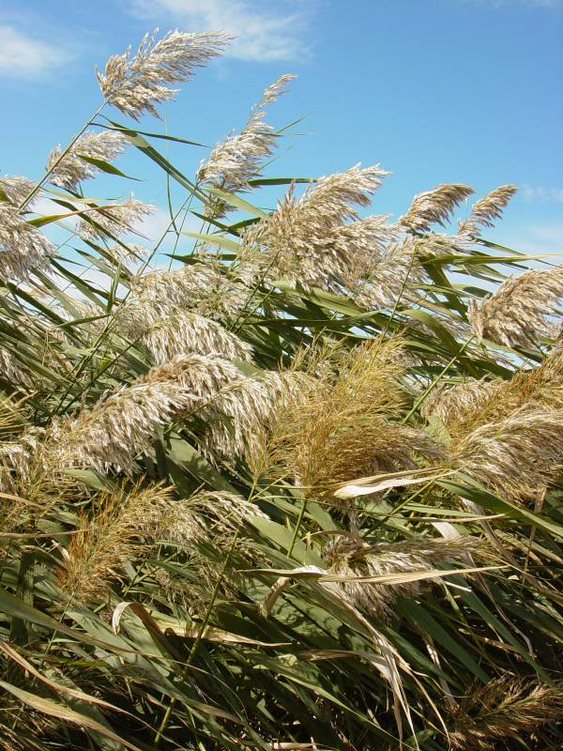
Why it's a problem
The phragmites plants form a dense mat of roots that can change water systems. It destroys habitats while not allowing native vegetation to grow. It releases a chemical in the roots that stops or slows the growth of neighboring plants.
Phragmites is not yet well established in King County and if we control new and existing infestations as soon as we know about them, we have the chance to stop the species from taking over our wetland systems.
Plant description
Phragmites is primarily found in wetlands and waterbody margins, although it can establish anywhere. Phragmites plants are large grasses that can reach up to 15 feet tall.
Leaves are long, narrow, and pointed. They are flat and smooth and can reach 8 to 16 inches long and 0.5 to 2.0 inches wide. Leaves are usually grayish green in color. However, ornamental varieties can also have a variegated (more than one color) pattern.
Stems are tan, rough, rigid, and hollow.
Seed head plumes are dense, feathery, and silky. Floral spikes are purplish and 6 to 16 inches long. They turn tan and appear to widen as they mature. These plumes form at the end of the stalk and flower July through October.
Phragmites ligules (growth at the junction where the leaf blade connects to the stem) are hairy (as opposed to membrane-like or papery like other similar grasses).
Phragmites is clonal, which means that plants spread outwards from a parent plant via rhizomes (horizontal root systems that produce new shoots). Rhizomes can grow 6 or more feet every year, growing up to 60 feet in length and up to 6 feet deep underground. Phragmites also reproduces via seed.

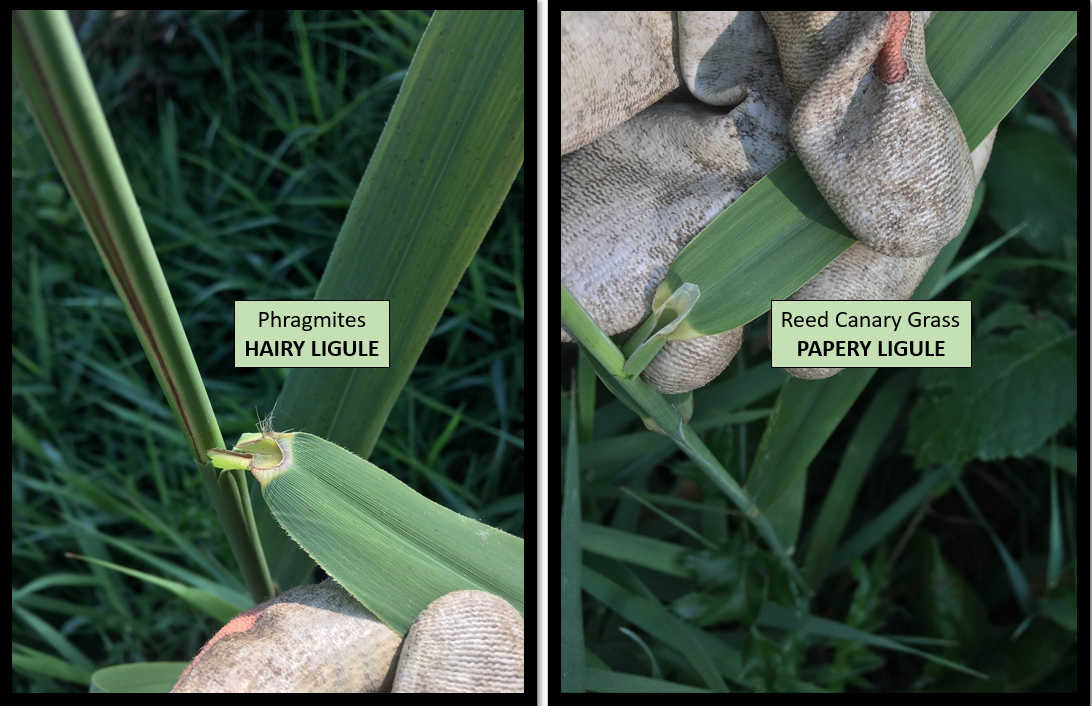
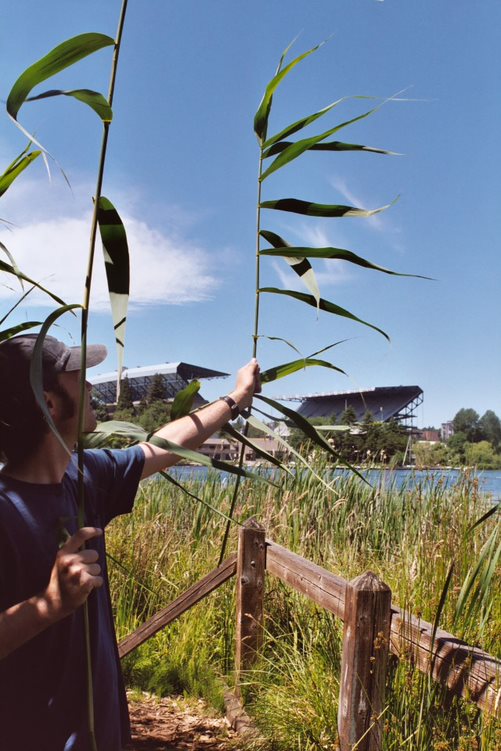
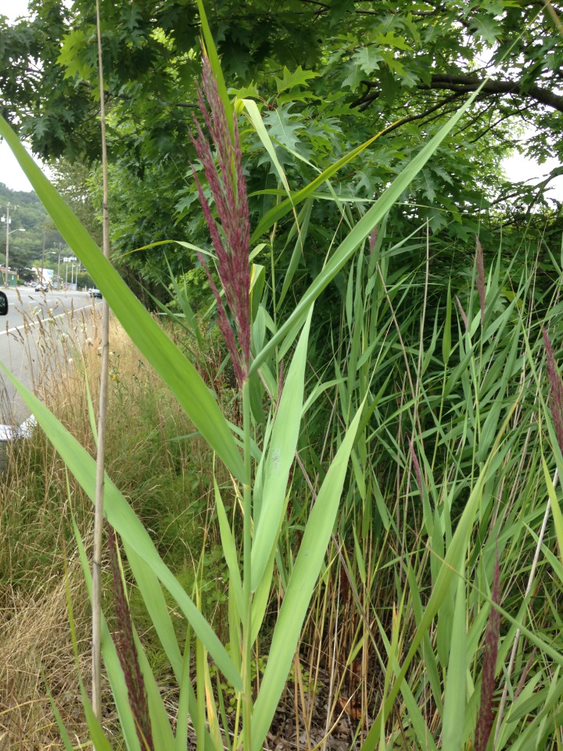
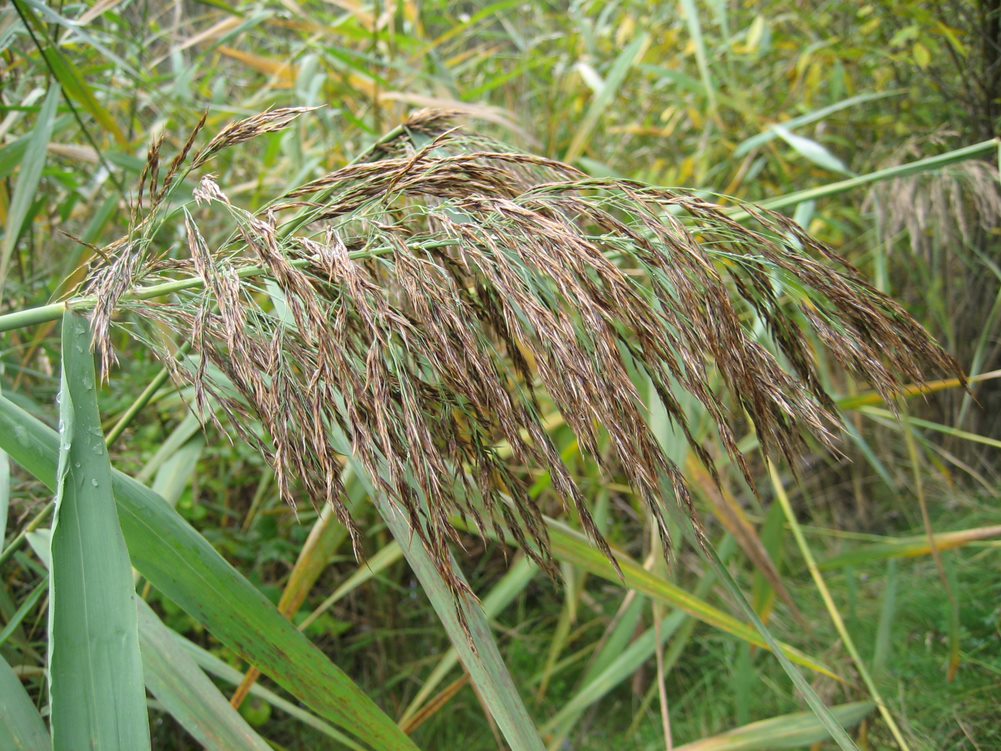
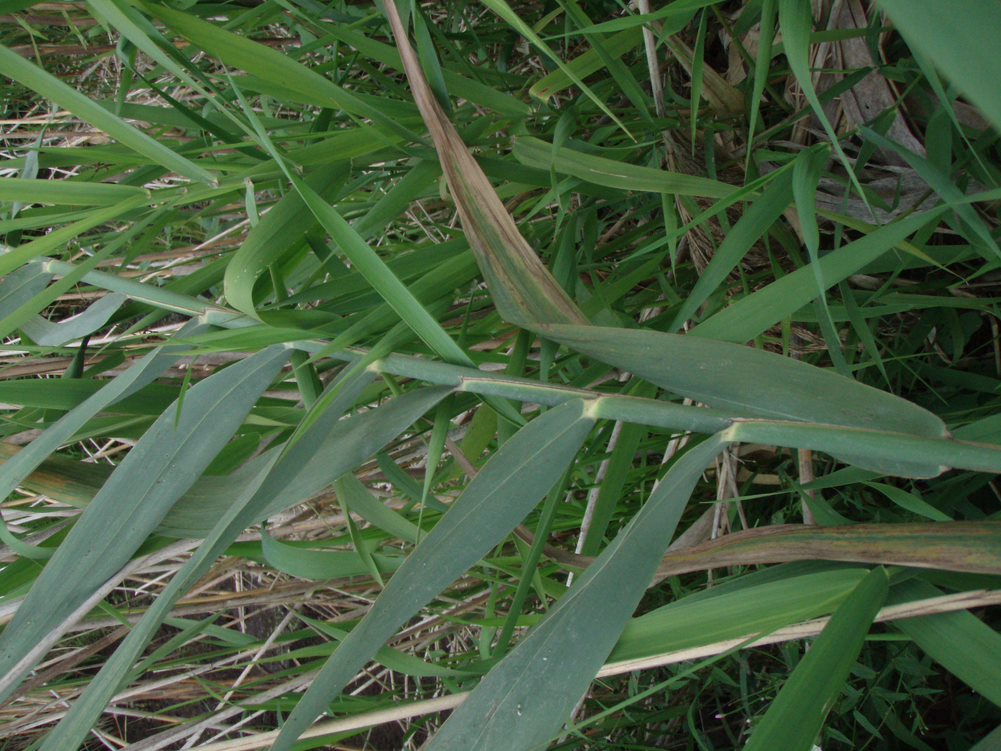
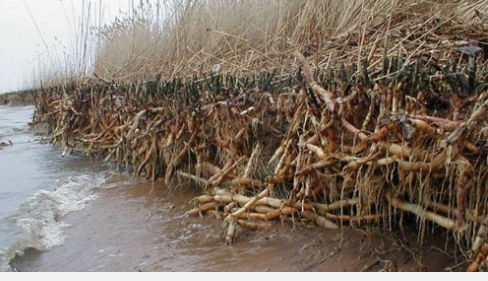
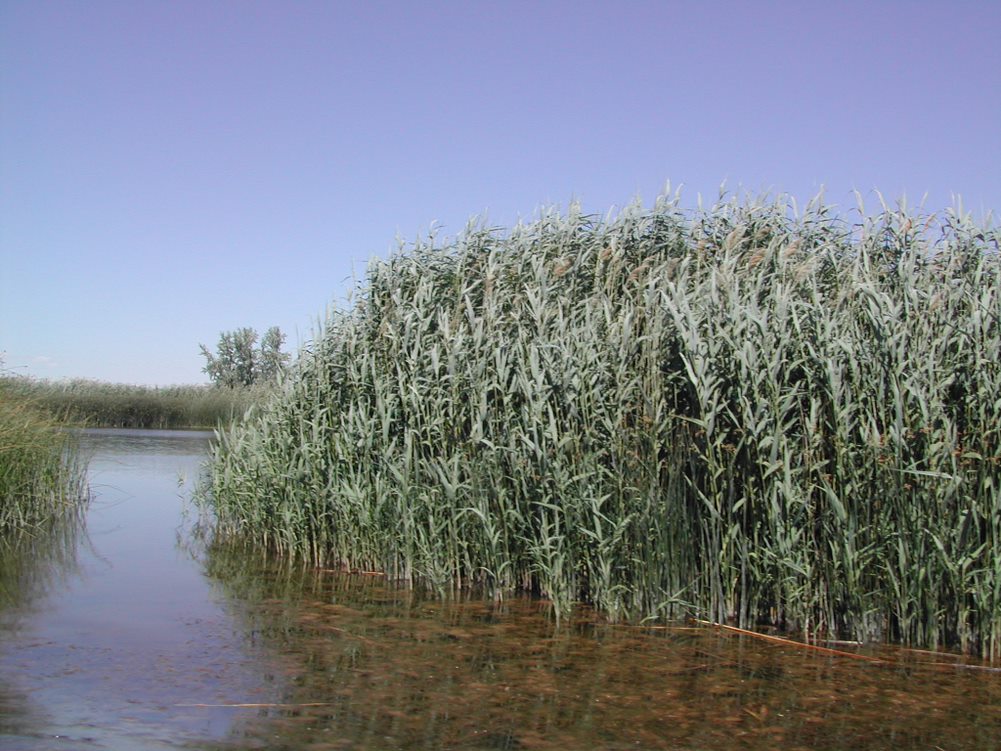
Be aware of look-alike plants
Phragmites is often confused with:
American common reed
Giant reed
When in doubt, take photos and share them with us or report them on iNaturalist.
What to do if you find it
Property owners are required to control phragmites on lands that they manage. Please notify us if you see this plant in King County. Our program staff can provide you with site-specific advice on how best to remove it.
We map all known locations of regulated noxious weeds to help locate new infestations in time to control them.
Control methods
We recommend using a combination of methods to control noxious weeds. In areas with few weeds, it is important to act quickly before they become harder to control. Make a long-term plan as it often takes several years to get rid of most weeds. Start in the least infested areas first and then move into more heavily infested areas.
For more in-depth control information, read Best Management Practices (BMP) for phragmites (310KB)
Manual control
Small plants can be dug up. Dispose of all root fragments. If plants are in seed, cut off and bag all seed heads before removal. It is difficult to remove the plants without spreading the seeds if they are present.
For larger patches, it is not practical to dig up the plants because of the extensive, deep roots and the large amount of plant material that would need to be disposed of as garbage.
Mechanical control
Cutting and mowing can be successful if done at the right time. Cut plants just before the end of July. Take care to remove cut shoots to prevent re-growth. Repeat this at the same time every year for several years to exhaust roots.
Chemical control
Stay safe when using herbicide:
- Always read the label before use.
- Wear a long-sleeved shirt, long pants, shoes, and eye protection.
- Follow state and local regulations.
Larger patches most likely will need herbicide treatments to be effective.
Avoid spraying where there is a chance that herbicide will enter a waterway or wetland unless you are using a state-approved aquatic herbicide and have the required permits and licenses to do so. Use of pesticides in water is regulated in Washington state. See Washington Department of Ecology Aquatic Pesticide Permits for details.
Disposal instructions
Bag all removed plant material and dispose it in the garbage. If seed heads are present, take care to remove, bag, and dispose of these before removing the remainder of the plant to avoid spreading the seeds.
Noxious Weed Disposal - Washington State Noxious Weed Control Board

 Translate
Translate